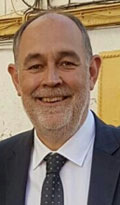January 2019
Special Focus: Process Optimization
Improving resource efficiency of industrial processes with TOP-REF methodology—Part 1
The processing industry consumes significant amounts of resources, such as materials and energy, to produce valuable goods for society.
The Authors
Heiko Radatz is a chemical engineer with a special focus on process and plant design and process simulation. He completed his dual-bachelor studies in Mechanical Engineering with a specialization in Process Engineering at DHBW-Mannheim in cooperation with Linde AG. Mr. Radatz holds an MS degree from TU Dortmund University and is finishing his PhD at TU Dortmund University in the research field of module-based plant design. He recently started as Technology Expert for Process Modeling at Covestro AG in Leverkusen.
Gerhard Schembecker is Professor for Plant and Process Design at the Department of Biochemical and Chemical Engineering of TU Dortmund University. He holds a PhD in chemical engineering from the same university. As co-founder of the consultancy firm Process Design Center, he worked in more than 100 industrial design projects for the chemical industry. In 2005, he was appointed Professor for Plant and Process Design at the Department of Biochemical and Chemical Engineering of TU Dortmund University. His research interests focus on the conceptual design and simulation of (bio)chemical processes with special interest in innovative downstream processes and on module-based plant design.
Guilhem Raffray is a Data Scientist and Modeler. His roles at Cosmo Tech varied from model development, solution design, project management and business development support. During the past 7 yr, he combined his mathematical, engineering and computer science skills in various industrial sectors. He is working as an independent consultant in data science, modelling, optimization and decision making. Dr. Raffray holds a PhD in Process Engineering and Applied Mathematics.
Diamantis Sellis is complex systems modeler at CosmoTech. He has more than 10 yr of research experience in bioinformatics, genome complexity and population genetics. He has studied biology and holds an MS in Bioinformatics from Athens University, Greece, and a PhD in evolutionary biology from Stanford University, US.
Fernando Boto holds an MS degree and PhD in Computer Science from the University of the Basque Country. He has more than 15 yr of experience in developing research and development projects. In July 2010, he began his working experience in Tecnalia Research and Innovation where he is expanding his interest in the development of intelligent applications. His research focuses on intelligent process monitoring and control, energy efficiency and resource planning and optimization. He has published several scientific works, all in international journals and conferences.
Zigor Echeverria is a Project Manager in TECNALIA. He has more than 12 yr of experience in project management, with a background in basic process control and safety instrumented systems.
Alberto Carrion is an Industrial Engineer. He has 7 yr of experience in research and development projects applied to analysis and optimization of thermal systems in the process industry. He has also taken part in projects related to combustion technologies using CFD tools.
Carlos Herce is a Technology Expert and Post-Doctoral Researcher in the Fuels and Combustion Technologies Group in the CIRCE Foundation (Zaragoza,Spain). He holds a MS in Chemical Engineering from the University of Zaragoza, and a PhD in Energetics from the University of Rome ”La Sapienza” (Italy)—University of Zaragoza. Dr. Herce has participated in 12 research and development projects and has published more than 35 papers in international journals, books and conference proceedings. His research fields are centered in CFD simulation, combustion, power plants, fluidization, heat transfer and resource efficiency in industries.
Antonia Gil is a senior lecturer (Associate Professor) at the University of Zaragoza. Her fields of expertise are thermodynamics, heat transfer, thermal engineering and energy from biomass. At present, she conducts research activities as a member of the CIRCE Institute (University of Zaragoza). She has lead and/or participated in several Spanish and EU research projects over the past 20 yr.
Alfred Arias has worked for nearly 35 yr in the petrochemical industry (Monsanto and Dow Chemical) performing different responsibilities in manufacturing and management positions. Mr. Arias holds degrees in Chemical Engineering from the Institut Quimic de Sarriá and Industrial Engineering from the Universitat Ramon Lull, as well as a postgraduate degree in petrochemistry from the Universitat Politècnica of Catalunya. He works as a freelance consultant, team coach and Associate Professor in the MBA program of the Universitat Rovira i Virgili.
Ricard Borrego is a chemical engineer for Dow Tarragona, Spain. He has 4 yr of experience in operation roles in the petrochemical industry. He holds a Bch degree in Chemical Engineering and a MS degree from the University Rovira I Virgili, Tarragona.
Joaquín Romero is a chemical engineer for Zaragoza University. He has 10 yr of experience in industrial processes, specializing in start-up of new industrial facilities. He has also taken part in more than 12 research and development projects and holds 20 patents.
João T. Jacinto is a process engineer for Sines Refinery, Portugal. He started working with Galp in 2015 and has been a part of the refining technology and development team, focusing mainly on energy and process optimization. He is involved in projects focusing energy efficiency and digitization. He also works on the daily operations, troubleshooting and optimization of the utilities plant. Mr. Jacinto holds an MS degree in chemical engineering from Instituto Superior Técnico—University of Lisbon.




















Comments